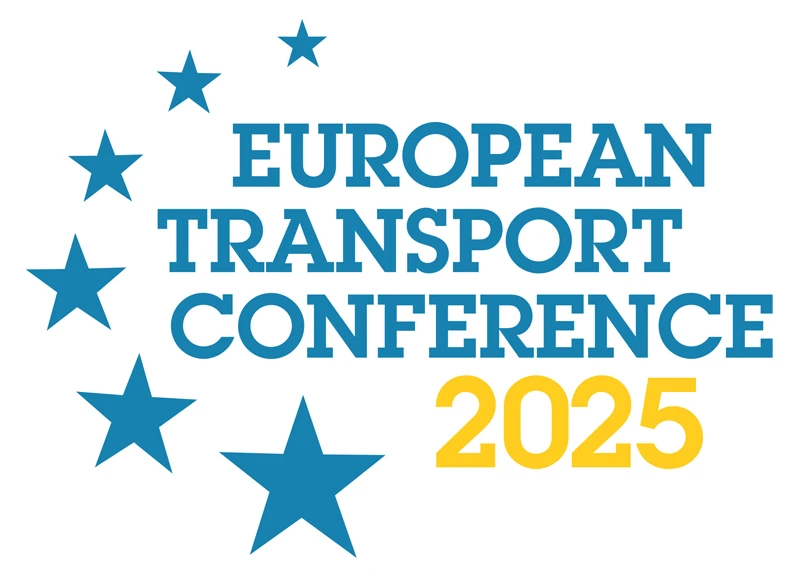-
Past ETC Papers

Browse, search and view papers from the past AET Conferences.
-
Members' Area

AET promotes networking and exchange of ideas, information and opportunities amongst members.
Conference Papers 2018
Dublin, Ireland
ETC Conference Papers 2018
How to achieve less CO2 emissions and air pollution from long distance freight transport
Seminar
Day 1 (10 Oct 2018), Session 3, Emissions, 16:45 - 18:15
Status
Accepted, awaiting documents
Submitted by / Abstract owner
Inge Vierth
Authors
Inge Vierth, VTI - Swedish Road and Transport Research Institute
Rune Karlsson, VTI - Swedish Road and Transport Research Institute
Tobias Lindé, VTI -Swedish Road and Transport Research Institute
Short abstract
The project studies to what extent infrastructure charges one by one and in combination can reduce CO2 emissions and air pollution from long distance freight in the whole transport system and to what extent different charges reinforce each other.
Abstract
Being important interfaces in the transport system, ports all over the world apply different types of charges to reduce CO2 emissions and air pollution at the sea and the land side. This study addresses both the land side and the sea side, with emphasis on the land side. and the infrastructure charges (and taxes) that are applied to reduce CO2 emissions and air pollution caused by vessels, freight trains and trucks on the Swedish territory. The objective is to analyse the environmental impacts of ports’ charges and national charges one by one and in combination.
Several scenarios are compared to the base: (i) 5% higher fairway dues and 8% higher pilot fees in Swedish ports (in place since 1 January 2018), (ii) 40% higher rail track charges in Sweden (planned for 2025), (iii) implementation of distance based road user charges for trucks (proposed in government investigation 2017) and (iv) hypothetical gate fees of SEK 50, 100, 300, 500 and 1000 per truck passage in all Swedish ports and (v) hypothetical gate fees of SEK 50, 100, 300, 500 and 1000 per truck passage in specific ports.
The cost minimising Swedish national freight transport model is used to simulate the impacts of the different charges one by one and in combination. Both the effects on the modal split (measured in tonne-km) and the throughput (in tonnes) in the ports in the 14 stretches of the Swedish coast are calculated. Special attention is taken to the major ports of Gothenburg (West coast), Trelleborg (South coast) and Stockholm (East coast). Furthermore, the amount of CO2, NOx, SOx and PM emissions (in tonnes) is calculated and valued in monetary terms.
The results so far indicate that the higher fairway dues and pilot fees imply relatively small modal shifts (0.3% less sea tonne-km) and low own price and cross price elasticities; the same is true for the higher rail track fees (1.0% less rail tonne-km). The impact is, as expected, greater for the introduction of distance based road user charges (4.8% less road tonne-km). The road user charges are calculated to lead to a 2% higher throughput in all ports and a shift from ports at the South coast to ports at the West and East coast.
The simulations indicate that gate fees of up to SEK 300 per truck passage in all Swedish ports do not lead to major impacts. For a gate fee of SEK 300 a shift to land based modes (3.8% more rail tonne-km, 1.2% more road tonne-km) and ports outside Sweden is calculated. It is obvious that the modes are both competing and complementary to each other. It is analysed to what extent the model results for Sweden can be generalised.
The project results illustrate to what extent infrastructure charges one by one and in combination can reduce CO2 emissions and air pollution in the whole transport system and to what extent different charges reinforce each other. The results can be used as a basis for policy making, for example to indicate to what extent charges at the local, national and international level should be co-ordinated.
Programme committee
Freight and Logistics
Topic
New Mobility patterns, Digitisation and Mobility as a Service
Documents:
No documents yet.
Association For
European Transport
Forester House
Doctors Lane
Henley-in-Arden
Warwickshire, UK
B95 5AW
+44 (0) 15 64 793552
VAT number: 710 1866 64
Conference Supporters & Endorsers




Legal Entity
The Association for European Transport is registered as an Association ('vereniging') with the Chamber of Commerce for Haaglanden in The Netherlands under company number 27170096.
Built on Zenario




